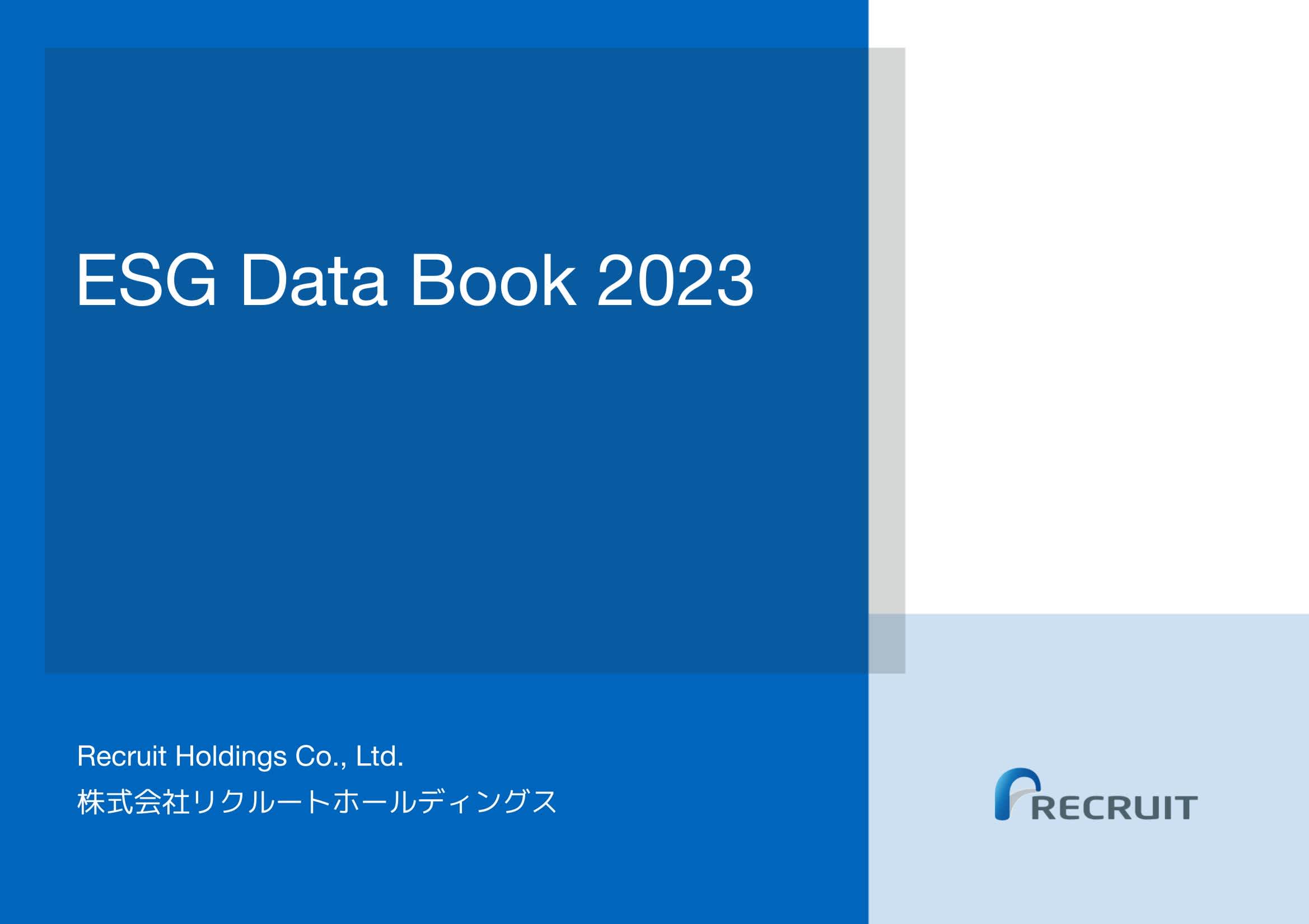Sustainability
ESG Data & Reports
ESG Data

ESG Data Book
The purpose of Recruit Holdings' “ESG Data Book” is to disclose environmental, social and governance (ESG) information mainly for its stakeholders with a great interest in ESG investment. We organize ESG information and data by category for easier reference, and endeavor to share comprehensive ESG information of Recruit Group. Other disclosures below also cover ESG topics.
ESG Data Book Archives
ESG Data Book (Published on 2024/01/30)
ESG Data Book (Published on 2023/10/20)
Reports

Recruit Group Profile 2023: Inside Out
"Recruit Group Profile: Inside Out" is an annual corporate profile presenting our mid- to long-term management strategy and a comprehensive overview of Recruit Group to a wide range of stakeholders. It contains a collection of stories that illustrate the progress we are making on our commitment to sustainability and highlights how Recruit Group's impact extends from "Inside" the company to "Out" in society.
Archives
Recruit Group Profile 2022: Inside Out
Recruit Group Profile 2021: Inside Out